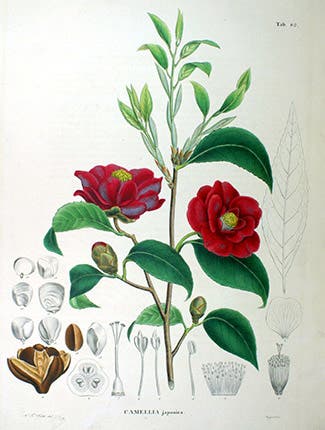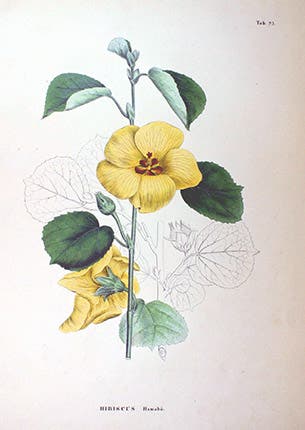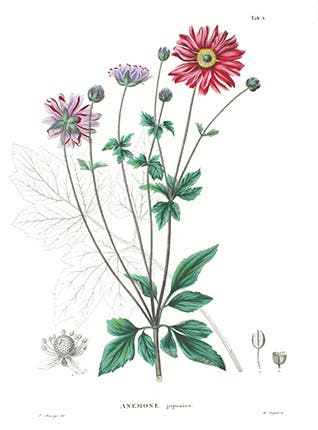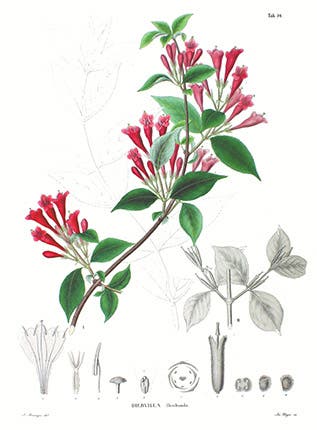Scientist of the Day - Philipp Franz von Siebold
Philipp Franz von Siebold, a German physician and botanist, died Oct. 18, 1866, at the age of 70. In 1823, Siebold was allowed onto the tiny man-made island of Dejima in Nagasaki harbor in Japan. At this time, the ruling class in Japan was extremely isolationist, and Dejima was the only place where foreigners, mostly Dutch, were permitted. Siebold set up an informal training school for physicians there, and he was so successful, or his students were, that he was gradually allowed to move about the country and collect plant and animal specimens. He was finally deported, in 1829, when some maps of Japan was found in his possession, a real no-no for a foreigner, but he was allowed to ship his specimens back to Holland, and there he published one of the first well-illustrated accounts on the plants of Japan, the Flora Japonica, with help in the descriptions from Joseph Gerhard Zuccarini.
The work was issued in 30 parts between 1835 and 1870, each part with five colored plates, and it is one of the more attractive “floras” ever published. We show here, in order, a Bigleaf Hydrangea, Japanese Camelia, Hamabo Hibiscus, Japanese Anemone, and Floribunda Weigela.










